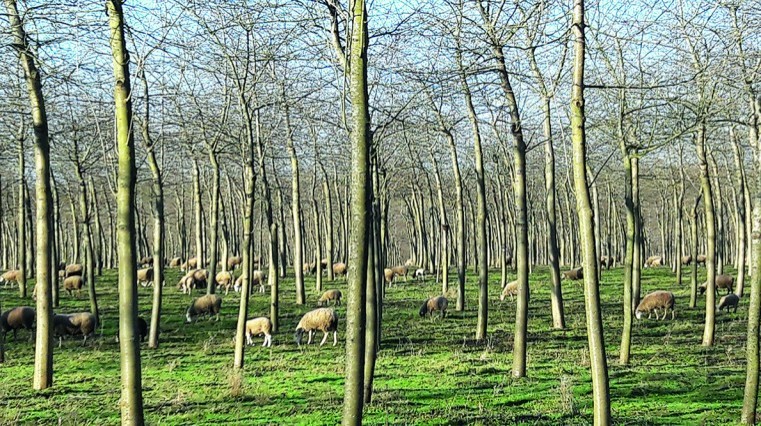Agroforestry is distinct from farm woodlands, which are usually grown in patches that have little interaction with the farming system. Agroforestry is a planned system where there is interaction between the trees and the crop – such as in grazed areas.
“We are just not very good at planting trees,” said Dr Jo Smith, from the Organic Research Centre (ORC) near Newbury in Berkshire. “In 2016 the UK missed a target set by DEFRA for planting woodland by 93% and we rank the lowest for woodland density in Europe. However, this figure could be significantly reduced by incorporating agro forestry into the farmed landscape.“
In the common agricultural policy (CAP) covering the years 2007 to 2013, Dr Smith said the devolved administrations in Scotland, Wales and Northern Ireland decided that if farmers had more than 50 trees per hectare, they would lose their subsidies. In the current CAP which runs until 2020, the limit has been raised to 100 trees per hectare.
“If you look at the policy guidance for England, it does not set a limit,” Dr Smith said. “Instead, it says trees can be planted as long as agriculture can be carried on underneath them. But that is a bit vague.”
Although they have the limit, Northern Ireland, Scotland and Wales have used the CAP to offer farmers support to plant trees in agroforestry schemes. “In Northern Ireland, there is five years of maintenance, which has been quite popular,” Dr Smith said. “Thirty farmers applied for the funding which is not a lot, but it’s a start.”
In England, the government did not take that support from the CAP. “Northern Ireland, Scotland and Wales applied the support in different ways, and Northern Ireland has been the most successful,” Dr Smith said.
The ORC has been researching agroforestry for between 10 and 15 years, and has a trial in which twin rows of trees are followed by 20 metres of pasture before there is another twin row of trees and more pasture. At the Game and Wildlife Conservation Trust’s Allerton project in Leicestershire, there are trials examining different tree densities for grazing with sheep.
Shelter belts at lambing time can reduce wind speeds and improve the chances of lambs surviving. In Mediterranean countries, animals are using up less of their resources by sheltering and grazing under trees which are scattered across whole fields rather than being confined to the edges.
“We engaged with DEFRA Natural England at the end of the last CAP, and their response was that no one is interested,” said Dr Smith. “But now everyone is talking about agroforestry.” Dr Smith is leading a European Union funded project called AFFINET – which stands for AgroForestry Innovation NETworks – in the UK with Abacus Agriculture and the Farm Woodland Forum. A few AFFINET workshops have been organised already, and three conclusions have been drawn:
- there is a lack of information and knowledge for those who want to try agro forestry;
- there is a pressing need for evidence about the economics and financial implications of agro forestry; and
- on the technical side, farmers need to know how to manage trees in these systems.
“A lot of research has been done, but it has to be made available to the people who need it,” Dr Smith said.
“Farmers do not necessarily know how to manage trees. Trees are slow growing and not always at the forefront of management priorities.” For more information, Dr Smith suggested that farmers should look at the work of The Woodland Trust and Agforward, another EU project in which ORC is a partner.
Photo: A slivopastoral system with cherry trees and sheep ©AGFORWARD project




